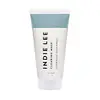What's inside
What's inside
 Key Ingredients
Key Ingredients

 Benefits
Benefits

 Concerns
Concerns

 Ingredients Side-by-side
Ingredients Side-by-side

Water
Skin ConditioningGlycerin
HumectantCoco-Caprylate/Caprate
EmollientSorbitan Stearate
EmulsifyingGlyceryl Stearate Se
EmulsifyingCetearyl Alcohol
EmollientTriheptanoin
Skin ConditioningSodium Acrylate/Sodium Acryloyldimethyl Taurate Copolymer
Emulsion StabilisingCetyl Alcohol
EmollientSilica
AbrasiveSqualane
EmollientVitis Vinifera Seed Oil
EmollientPalmitoyl Grapevine Shoot Extract
AntioxidantC15-19 Alkane
SolventGlycolic Acid
BufferingBisabolol
MaskingBenzyl Alcohol
PerfumingSodium Hydroxide
BufferingCitric Acid
BufferingCaprylyl Glycol
EmollientLactic Acid
BufferingXanthan Gum
EmulsifyingPolyglyceryl-6 Laurate
EmulsifyingArginine
MaskingPaeonia Lactiflora Root Extract
Skin ConditioningTartaric Acid
BufferingPolyglycerin-6
HumectantHelianthus Annuus Seed Oil
EmollientTocopherol
AntioxidantSorbitan Oleate
EmulsifyingGlucose
HumectantDehydroacetic Acid
PreservativeSorbitan Isostearate
EmulsifyingAcer Saccharum Extract
Skin ConditioningCarbomer
Emulsion StabilisingSodium Phytate
Papain
Skin Conditioning1,2-Hexanediol
Skin ConditioningAlgin
MaskingCitrus Limon Peel Oil
MaskingParfum
MaskingWater, Glycerin, Coco-Caprylate/Caprate, Sorbitan Stearate, Glyceryl Stearate Se, Cetearyl Alcohol, Triheptanoin, Sodium Acrylate/Sodium Acryloyldimethyl Taurate Copolymer, Cetyl Alcohol, Silica, Squalane, Vitis Vinifera Seed Oil, Palmitoyl Grapevine Shoot Extract, C15-19 Alkane, Glycolic Acid, Bisabolol, Benzyl Alcohol, Sodium Hydroxide, Citric Acid, Caprylyl Glycol, Lactic Acid, Xanthan Gum, Polyglyceryl-6 Laurate, Arginine, Paeonia Lactiflora Root Extract, Tartaric Acid, Polyglycerin-6, Helianthus Annuus Seed Oil, Tocopherol, Sorbitan Oleate, Glucose, Dehydroacetic Acid, Sorbitan Isostearate, Acer Saccharum Extract, Carbomer, Sodium Phytate, Papain, 1,2-Hexanediol, Algin, Citrus Limon Peel Oil, Parfum
Water
Skin ConditioningBentonite
AbsorbentZinc Oxide
Cosmetic ColorantColloidal Sulfur
AntimicrobialPropanediol
SolventGlycolic Acid
BufferingSalicylic Acid
MaskingHyaluronic Acid
HumectantCamphor
MaskingCetyl Alcohol
EmollientGlyceryl Stearate
EmollientChondrus Crispus Extract
Skin ConditioningAnthemis Nobilis Flower Extract
MaskingTitanium Dioxide
Cosmetic ColorantLimonene
PerfumingEthylhexylglycerin
Skin ConditioningPotassium Sorbate
Preservative
 Reviews
Reviews

Ingredients Explained
These ingredients are found in both products.
Ingredients higher up in an ingredient list are typically present in a larger amount.
Cetyl Alcohol is a fatty alcohol. Fatty Alcohols are most often used as an emollient or to thicken a product.
Its main roles are:
Though it has "alcohol" in the name, it is not related to denatured alcohol or ethyl alcohol.
The FDA allows products labeled "alcohol-free" to have fatty alcohols.
Learn more about Cetyl AlcoholGlycolic Acid is arguably the most famous alpha hydroxy acid (AHA) with tons of research backing its benefits.
It is found naturally in sugar cane but the form used in skincare is usually synthetic for purity and stability.
Glycolic acid removes the top layer of dead skin cells to allow newer and fresher ones to emerge.
AHAs work by breaking down the structural “glue” that holds old skin cells in place. When that buildup is gone, your skin can renew itself more efficiently.
Research also shows glycolic acid stimulates collagen production, helping to firm and thicken the skin over time. This is one of its biggest advantages over other AHAs.
Overall, glycolic acid helps with:
Fun fact: Glycolic acid boosts skin hydration by helping it produce molecules that increase hyaluronic acid naturally.
To work best, glycolic acid products should have a pH between 3-4 (that’s where exfoliation is most effective but still gentle on skin).
The pH and concentration of a product are key to its effectiveness:
It is normal to feel a slight stinging sensation when using glycolic acid. This usually fades as your skin adjusts.
Because glycolic acid has the smallest molecular size in the AHA family, it can penetrate deeper, which enhances its effectiveness but also makes it more likely to irritate sensitive skin.
If your skin is very sensitive or prone to rosacea, glycolic acid may be too strong; in that case, try milder options like lactic acid or a PHA instead.
Recent studies suggest glycolic acid might even help protect against UV damage. But don’t skip sunscreen! Freshly exfoliated skin is more sensitive to the sun.
Glycolic acid is a skincare superstar. It smooths, brightens, hydrates, and firms the skin. Unless you’re highly sensitive, it’s well worth adding to your routine.
Read more about some other popular AHA's here:
Learn more about Glycolic AcidWater. It's the most common cosmetic ingredient of all. You'll usually see it at the top of ingredient lists, meaning that it makes up the largest part of the product.
So why is it so popular? Water most often acts as a solvent - this means that it helps dissolve other ingredients into the formulation.
You'll also recognize water as that liquid we all need to stay alive. If you see this, drink a glass of water. Stay hydrated!
Learn more about Water